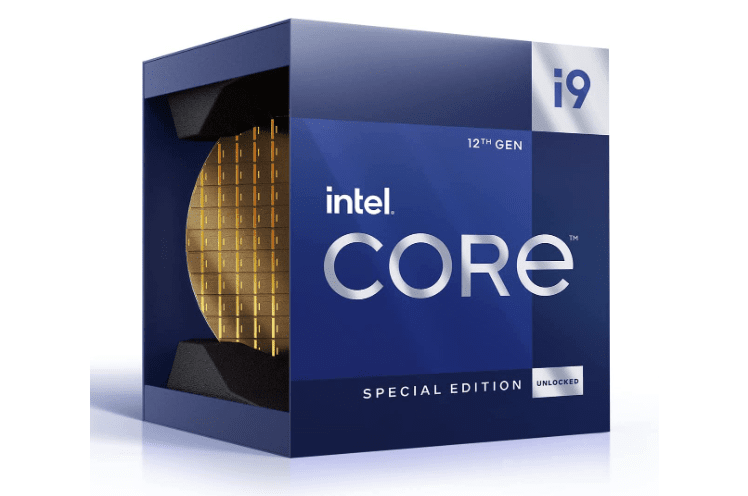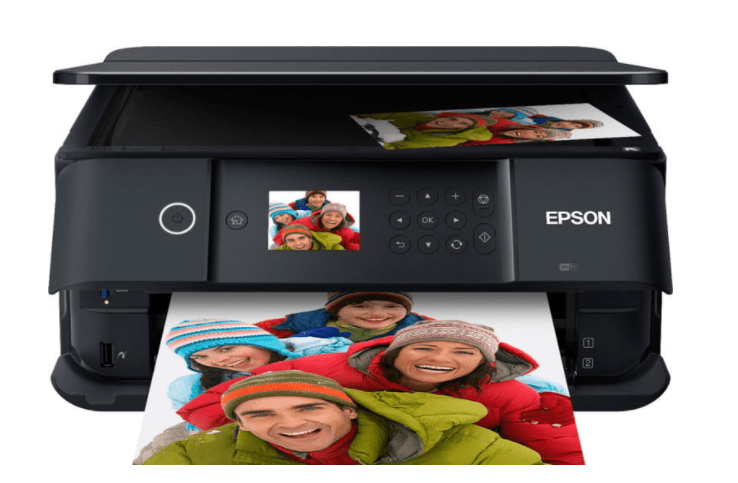Intel Core i9-13900K: When it comes to top-tier processors, few can compete with Intel’s Core i9 K-series, which is not only the fastest but also extremely overclockable. Indeed, during a recent trip to Israel to inspect Intel’s manufacturing process, the company demonstrated how its new Core i9-13900K processor could reach a whopping 8.0GHz. Granted, liquid nitrogen was used on the processor, but it’s still an impressive feat!
Aside from extreme hypothermia, how does the new 13th Generation Core i9-13900K compare to last year’s Core i9-12900K, and how does AMD’s new flagship Ryzen 9 7900 X and 7950X compare? We have the data to show you who wins and who is the better value.
The title of this review may give it away, but the devil is in the details. Let us see who comes out on top: Team Blue or Team Red.

Intel Core i9-13900K: What’s different
In comparison to last year’s Core i9-12900K, which was also reviewed, the new Core i9-13900K has eight more cores, bringing the total to 24. The extra cores are in the form of E-cores, while the P-count remains at eight. There are now 32 threads rather than 24.
The maximum turbo frequency increases from 5.2GHz to 5.8GHz, with the L3 and L2 cache increasing from 30MB to 36MB and 14MB to 32MB, respectively. The base TDP for both generations is 125 watts, but the new Core i9-13900K is thirstier, clocking in at 253 watts versus 241 watts. Pricing and RAM requirements for Intel 12th and 13th Gen Core i9s remain the same at $589 and DDR4 or DDR5 support, respectively.
Both chip generations (Intel 12 and Intel 13) can use the new Z790 chipset or the Z690 from last year. In terms of differences between the chipsets, the Z790 is more advanced, with one more USB 3.2 (Gen 2×2) connection, up to 20 PCIe 4.0 lanes (compared to 12 with Intel’s 600-series chipset), fewer PCIe 3.0 lanes (up to 8 compared to 16), and the same 16 PCIe 5.0 lanes. The Z790, on the other hand, offers no “speed” advantages over the Z690.
You may also like Intel Core i7-12700K vs. AMD Ryzen 7 7700X
Intel Core i9-13900K Performance
We based this review on last year’s MSI MPG Z690 Carbon WiFi chipset because there are no performance differences between it and the newer Z790 boards.
The Corsair H150i Elite Capellix AIO was used for cooling, with three 360mm fans installed in the Corsair iCUE 4000X RGB Mid-Tower ATX PC case. We used the new Corsair Dominator Platinum RGB DDR5, which was overclocked to 6600MHz using Intel XMP. The GPU is a GeForce RTX 3080, but it shouldn’t be a factor in our chosen CPU-dependent benchmarks. The outcomes are fascinating.
When compared to AMD’s flagship Ryzen 9 7950X, the new Intel Core i9-13900K is the fastest processor to date in Cinebench, Geekbench, CPU-Z, and Blender benchmarks (Monster, Classroom). Indeed, the Core i9-13900K scored just under 40,000 in Cinebench 23, which is absurd. The Ryzen 9 7950X scored around 36,000 in our previous review, though some online results put it closer to 37,000. Nonetheless, Intel has a massive lead over AMD.
Corona was nearly equal between AMD and Intel, with the latter taking only 36 seconds versus 37 seconds for the Ryzen 9 7950X. Geekbench also favors Intel over AMD (23,507 to 23,334 in multicore for Intel; 2,193 to 2,198 for AMD), but let’s call it even.
The AMD Ryzen 9 7950X took 15 minutes and 24 seconds to complete the HandBrake 4K video encode, while the Core i9-13900K took 15 minutes and 57 seconds. Intel came close, but AMD easily won. AMD also won the Blender (Junkshop) benchmark (172 vs. 168 samples per minute) and the 7-Zip compression benchmark.
In comparison to last year’s notable Core i9-12900K, the newer Core i9-13900K outperforms it on all benchmarks, particularly Cinebench 23 (39,368 vs. 26,388) and Corona (36 seconds vs. 57 seconds). The Core i9-13900K took 15 minutes and 37 seconds to encode a 4K 6.27GB.mov video file to H.265 NVENC, while its predecessor took well over 22 minutes. Those are significant gains.
The i9-13900K scored 16,557 on 3Dmark’s CPU Profile, which includes six tests with custom simulations (compared to 10,370 of the new Core i5-13600K). The workload is the same in all six tests, but the threading is different.
For fun, we ran the i9-13900K alongside an NVIDIA GeForce RTX 3080 in PCMark 10, which takes into account CPU, GPU, RAM, and SSD speeds in its overall score. With a score of 9,926, our test rig outperformed 99% of all results.
We benched productivity software consisting of Microsoft Office (Microsoft 365 apps) on UL’s newest benchmark, Procyon, and received an overall score of 8,574. Breaking it down, Word received a score of 8,830, Excel received a score of 9,487, PowerPoint received a score of 8,849, and Outlook received a score of 6,201.
What about the weather? It should come as no surprise that the Core i9-13900K gets hot under constant and prolonged load (100% CPU usage). We reached 212 degrees Fahrenheit even with our Corsair H150i Elite Capellix AIO (100 degrees Celsius).
We have omitted any gaming comparisons due to the GPU-dependent nature of modern video games. To summarize, when combined with a top-tier RTX 30-series or newer RTX 40-series GPU, the Core i9-13900K will be a winning combination for 4K gaming.
You may also like AMD Ryzen 6000 CPU: The Performance Punch Processor
Intel Core i9-13900K Price and Specs
Intel’s 13th Gen processors, like the 12th Gen processors, include new performance cores (‘P-core’), which do the majority of the work because they are the most powerful, and efficient cores (‘E-core’), which handle background operations. Because of this architectural shift, these newer CPUs are extremely powerful for heavy multitaskers, especially if you like to game, stream, and record at the same time.
The new Core i9-13900K has 24 cores, sixteen E-cores and eight P-cores, and 32 threads.
The Core i9-13900K has a turbo speed of 5.8GHz and a base speed of 3.0GHz. The L3 cache is 36MB with 32MB of L2, and the base TDP is 125 watts with a whopping max TDP of 253 watts.
Because it is a K-series chip, Intel allows users to easily overclock the processor with the Intel Speed Optimizer software. Intel also offers the Core i9-13900KF, which is the same as the 13900K but lacks the built-in Intel UHD 770 Graphics.
While the new 13th Generation processors can use the updated Z790 chipset, the CPU is also compatible with current-generation Z690 chipsets, but a mandatory microcode BIOS update is required to recognize the new processor. You can use either DDR4 RAM or the newer, faster, and more expensive DDR5 RAM with all 12th and 13th Gen Intel chips.
The top-tier Core i9-13900K remains the same this year, with a retail price of $589. The chip will be available for purchase today, October 20th. At $564, the GPU-less Core i9-13900KF is more affordable.
Intel is also releasing a “Special Edition” Core i9 processor called the Core i9-13900KS, which can run at 6.0GHz out of the box. That chip will not be ready until early 2023. While pricing has not been announced, historically, Intel charges $150 more for its “KS” variants, putting the Core i9-13900KS around $739. Because of the superior quality and pre-binning used in selecting the chip, the KS chip should be able to be overclocked even higher.
You may also like AMD Radeon RX 6500 XT: The Power Color Gaming Graphics Card
Intel Core i9-13900K Alternatives
AMD’s new Ryzen 9 7950X is the most obvious alternative to the Core i9-13900K. (or less-powerful Ryzen 9 7900X).
The advantage for AMD is in the wattage used, which peaks at 170 watts (versus 253 for Intel), as well as its ability to handle specific tasks such as video encoding or compression faster than the Core i9-13900K.
However, Intel, in our opinion, outperforms in terms of pricing and value. The Core i9-13900K costs $589, while the Ryzen 9 7950X costs more than $100 more, at $699. For an additional $40, you could get the Core i9-13900KS ($739), which has a coveted 6.0GHz top speed. $40 for the right to brag? Yes, why not?
When you get down to the Ryzen 9 7900X ($549), pricing favors AMD. While it is still a fast processor that easily outperforms last year’s Core i9-12900K across the board, it falls far short of the Core i9-13900K; however, it is still a great choice if you prefer AMD. If you don’t need Intel UHD graphics (and who does at this price point? ), the Core i9-13900KF ($569) will easily outperform the Ryzen 9 7900X.
If you’re upgrading from an older system and sticking with AMD, you’ll need to buy a newer chipset/socket and use more expensive DDR5 RAM. If you’re coming from anything Intel 11th Generation or earlier, you’ll also need a Z690 or Z790 chipset, but you can save money by sticking with DDR4 RAM.
Can’t afford the Core i9 processor or don’t require as much power? Consider the new Core i5-13600K ($319) or Core i7-13700K ($409) processors.
Finally, you could save about $90 by purchasing last year’s Core i9-12900K for $499. Sure, it’s not the fastest after today, but it’s also more than enough for even the most ardent gamers.
CamRojud may earn a certain commission on products purchased via our links, which supports our effort on this content.
Would you like to read more about Intel Core i9-13900K-related articles? If so, we invite you to take a look at our other tech topics before you leave!










